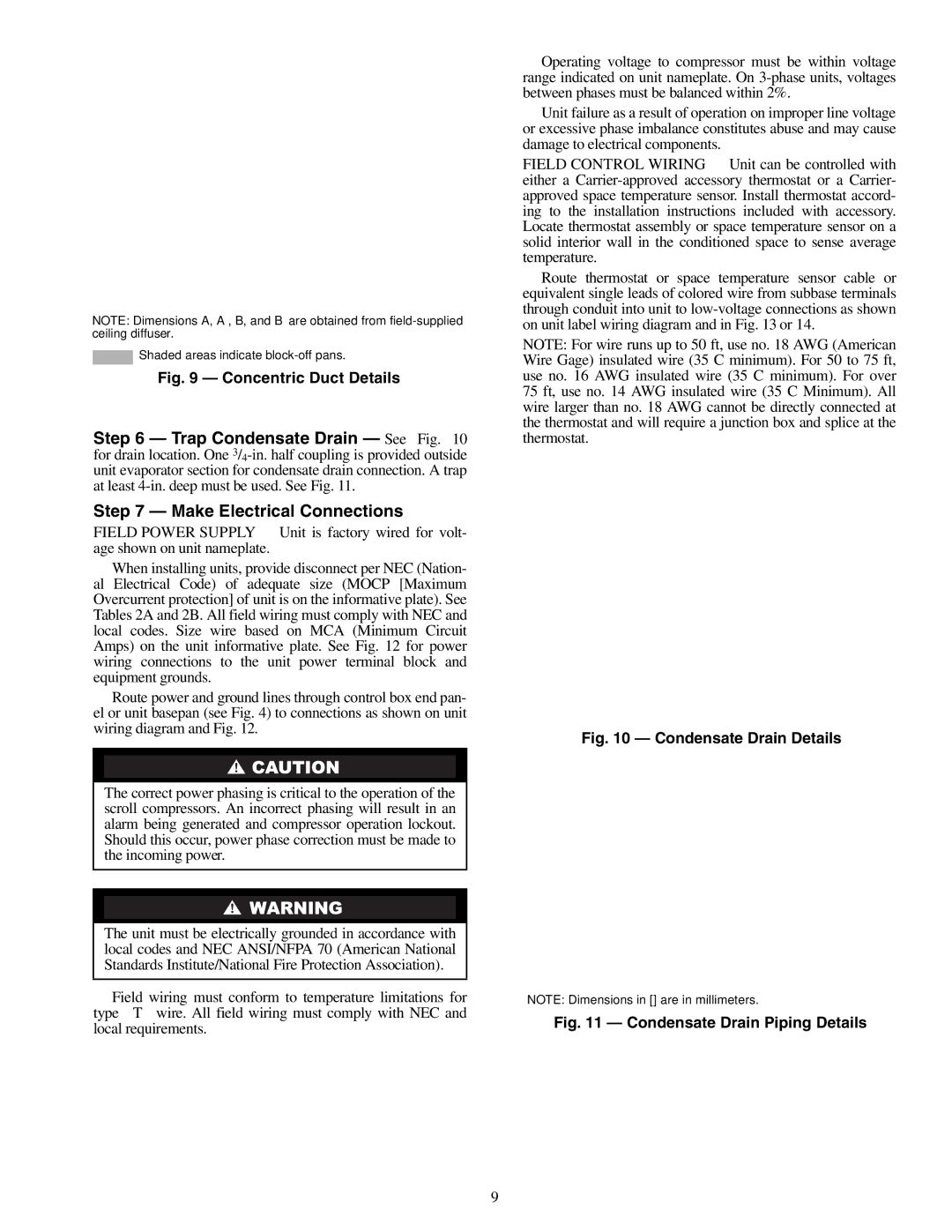
NOTE: Dimensions A, A′, B, and B′ are obtained from
![]() Shaded areas indicate
Shaded areas indicate
Fig. 9 — Concentric Duct Details
Step 6 — Trap Condensate Drain — See Fig. 10 for drain location. One
Step 7 — Make Electrical Connections
FIELD POWER SUPPLY — Unit is factory wired for volt- age shown on unit nameplate.
When installing units, provide disconnect per NEC (Nation- al Electrical Code) of adequate size (MOCP [Maximum Overcurrent protection] of unit is on the informative plate). See Tables 2A and 2B. All field wiring must comply with NEC and local codes. Size wire based on MCA (Minimum Circuit Amps) on the unit informative plate. See Fig. 12 for power wiring connections to the unit power terminal block and equipment grounds.
Route power and ground lines through control box end pan- el or unit basepan (see Fig. 4) to connections as shown on unit wiring diagram and Fig. 12.
The correct power phasing is critical to the operation of the scroll compressors. An incorrect phasing will result in an alarm being generated and compressor operation lockout. Should this occur, power phase correction must be made to the incoming power.
The unit must be electrically grounded in accordance with local codes and NEC ANSI/NFPA 70 (American National Standards Institute/National Fire Protection Association).
Field wiring must conform to temperature limitations for type ‘‘T’’ wire. All field wiring must comply with NEC and local requirements.
Operating voltage to compressor must be within voltage range indicated on unit nameplate. On
Unit failure as a result of operation on improper line voltage or excessive phase imbalance constitutes abuse and may cause damage to electrical components.
FIELD CONTROL WIRING — Unit can be controlled with either a
Route thermostat or space temperature sensor cable or equivalent single leads of colored wire from subbase terminals through conduit into unit to
NOTE: For wire runs up to 50 ft, use no. 18 AWG (American Wire Gage) insulated wire (35 C minimum). For 50 to 75 ft, use no. 16 AWG insulated wire (35 C minimum). For over 75 ft, use no. 14 AWG insulated wire (35 C Minimum). All wire larger than no. 18 AWG cannot be directly connected at the thermostat and will require a junction box and splice at the thermostat.
Fig. 10 — Condensate Drain Details
NOTE: Dimensions in [] are in millimeters.
Fig. 11 — Condensate Drain Piping Details
9
